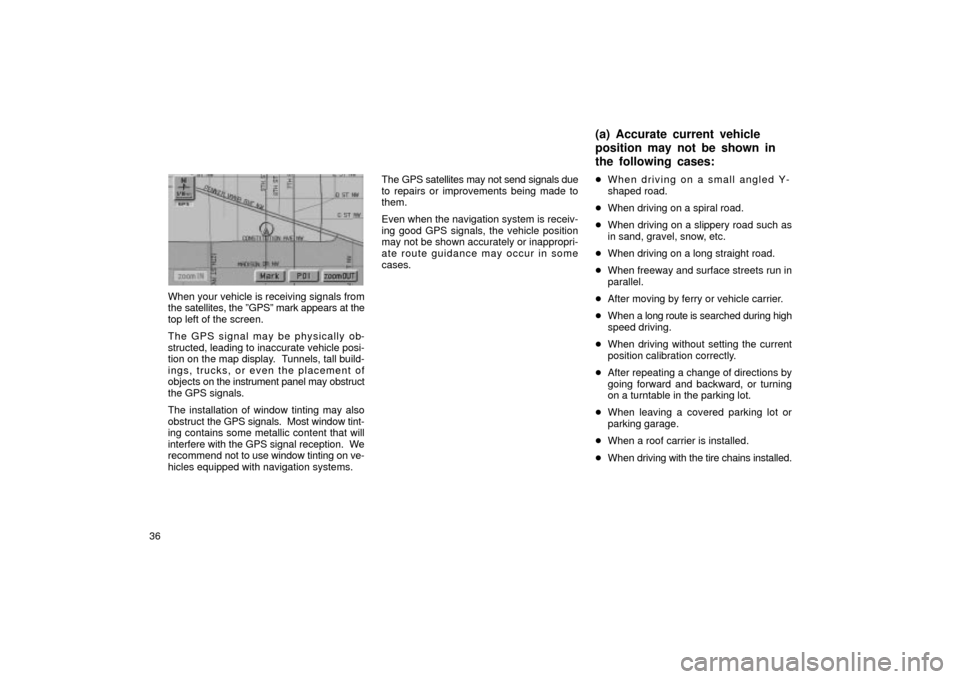36
When your vehicle is receiving signals from
the satellites, the ºGPSº mark appears at the
top left of the screen.
The GPS signal may be physically ob-
structed, leading to inaccurate vehicle posi-
tion on the map display. Tunnels, tall build-
ings, trucks, or even the placement of
objects on the instrument panel may obstruct
the GPS signals.
The installation of window tinting may also
obstruct the GPS signals. Most window tint-
ing contains some metallic content that will
interfere with the GPS signal reception. We
recommend not to use window tinting on ve-
hicles equipped with navigation systems. The GPS satellites may not send signals due
to repairs or improvements being made to
them.
Even when the navigation system is receiv-
ing good GPS signals, the vehicle position
may not be shown accurately or inappropri-
ate route guidance may occur in some
cases.
�
When driving on a small angled Y-
shaped road.
� When driving on a spiral road.
� When driving on a slippery road such as
in sand, gravel, snow, etc.
� When driving on a long straight road.
� When freeway and surface streets run in
parallel.
� After moving by ferry or vehicle carrier.
� When a long route is searched during high
speed driving.
� When driving without setting the current
position calibration correctly.
� After repeating a change of directions by
going forward and backward, or turning
on a turntable in the parking lot.
� When leaving a covered parking lot or
parking garage.
� When a roof carrier is installed.
� When driving with the tire chains installed.
(a) Accurate current vehicle
position may not be shown in
the following cases:
